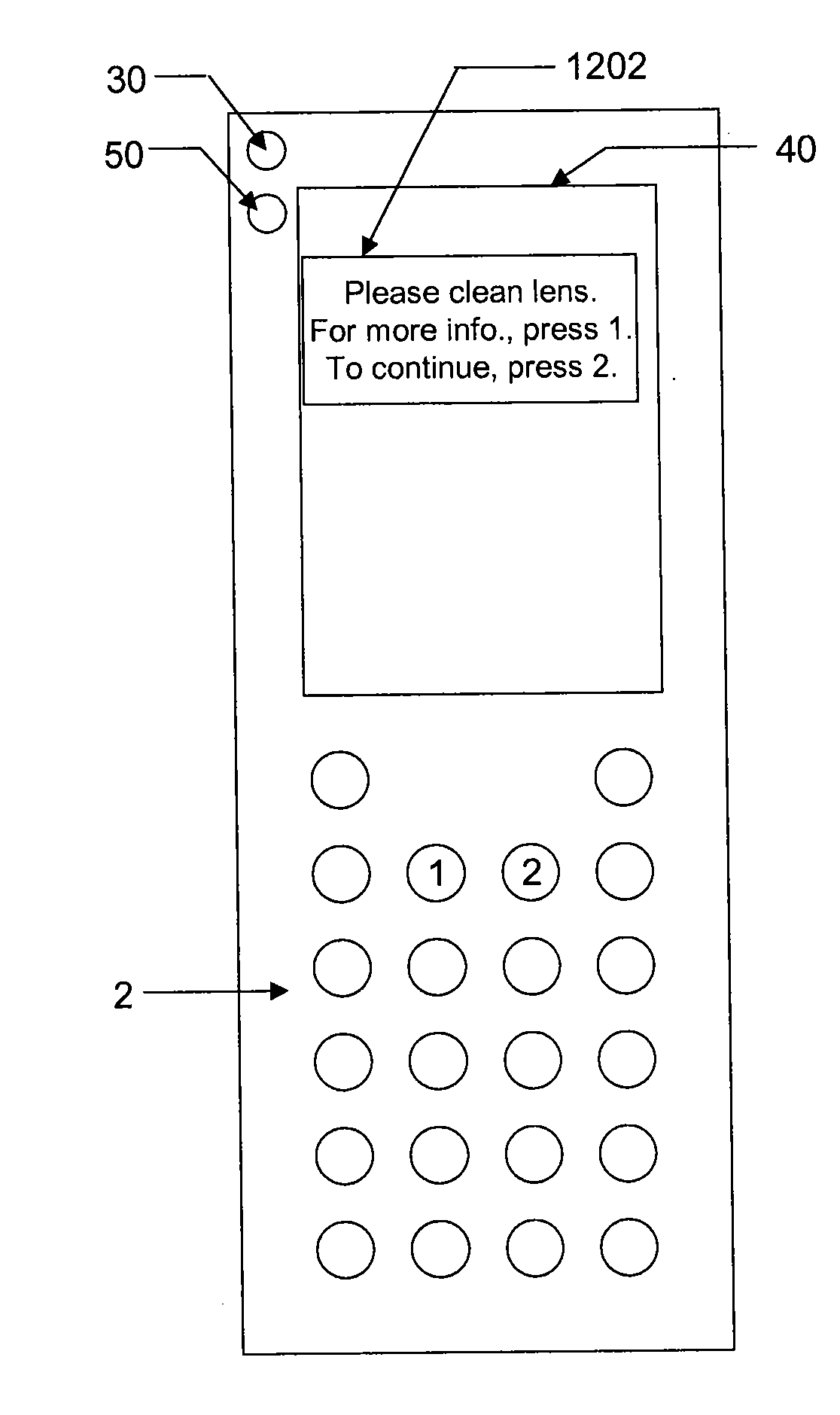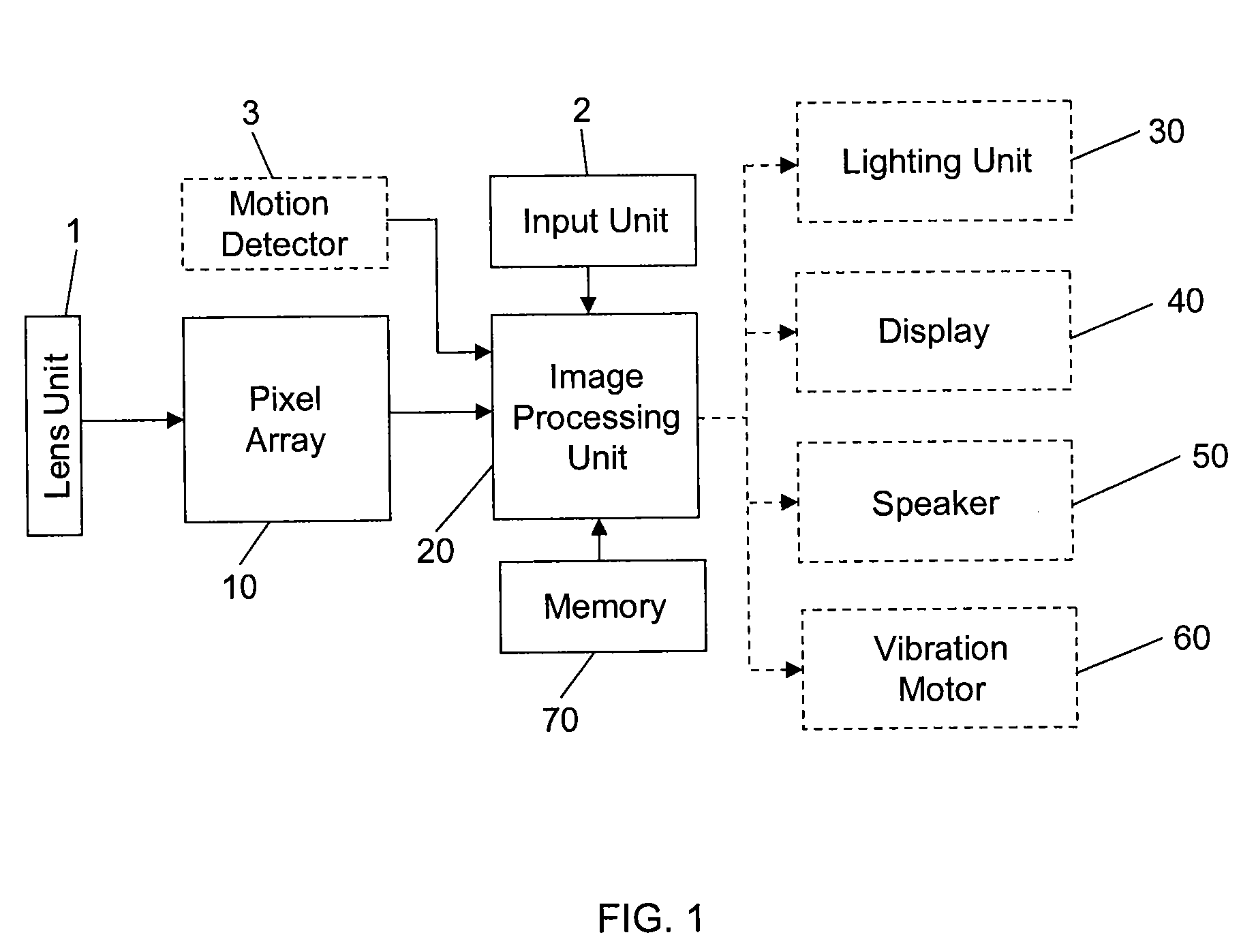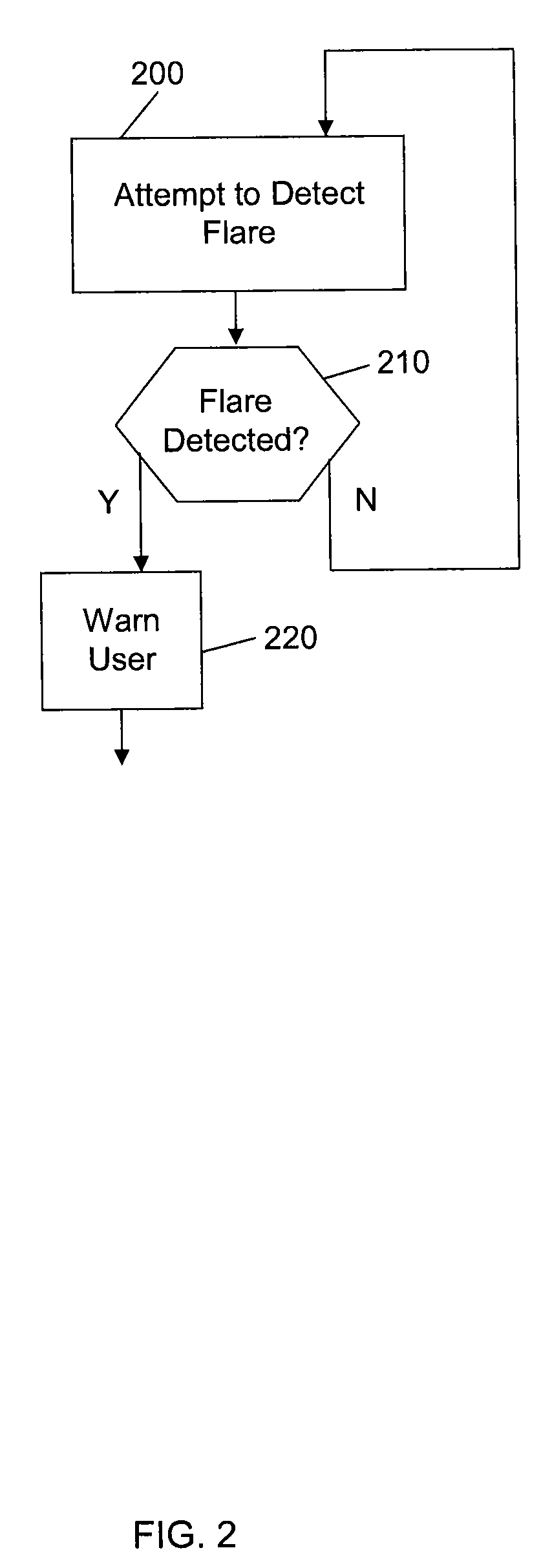Lens cleaning warning system and method
a technology of cleaning warning and lens, applied in the field of lens cleaning warning system and method, can solve the problems of image appearance foggy, cellular telephone camera lens easily being covered with contaminants,
- Summary
- Abstract
- Description
- Claims
- Application Information
AI Technical Summary
Problems solved by technology
Method used
Image
Examples
Embodiment Construction
[0017]FIG. 1 is a block diagram of an embodiment of a system for warning that a camera lens is contaminated. As shown, the system includes a lens unit 1, an optional motion detector 3, a pixel array 10, an image processing unit 20, a memory 70, an input unit 2 for allowing a user to interact with the image processing unit 20, and one or more of a lighting unit 30, a display 40, a speaker 50 and a vibration motor 60. In operation, the lens unit 1 may focus a scene within its field of view onto pixel array 10. When the system is on and is in camera mode, the pixel array 10 continually produces signals representing the scene(s) focused onto it. The signals are read out from the array 10 using readout circuitry (not shown) and processed using the image processing unit 20. The processing unit 20 may be configured as hardware or may be configured to process software stored in memory 70.
[0018]FIG. 2 is a flow chart showing steps in an embodiment of image processing which may be carried out...
PUM
 Login to View More
Login to View More Abstract
Description
Claims
Application Information
 Login to View More
Login to View More - R&D
- Intellectual Property
- Life Sciences
- Materials
- Tech Scout
- Unparalleled Data Quality
- Higher Quality Content
- 60% Fewer Hallucinations
Browse by: Latest US Patents, China's latest patents, Technical Efficacy Thesaurus, Application Domain, Technology Topic, Popular Technical Reports.
© 2025 PatSnap. All rights reserved.Legal|Privacy policy|Modern Slavery Act Transparency Statement|Sitemap|About US| Contact US: help@patsnap.com



